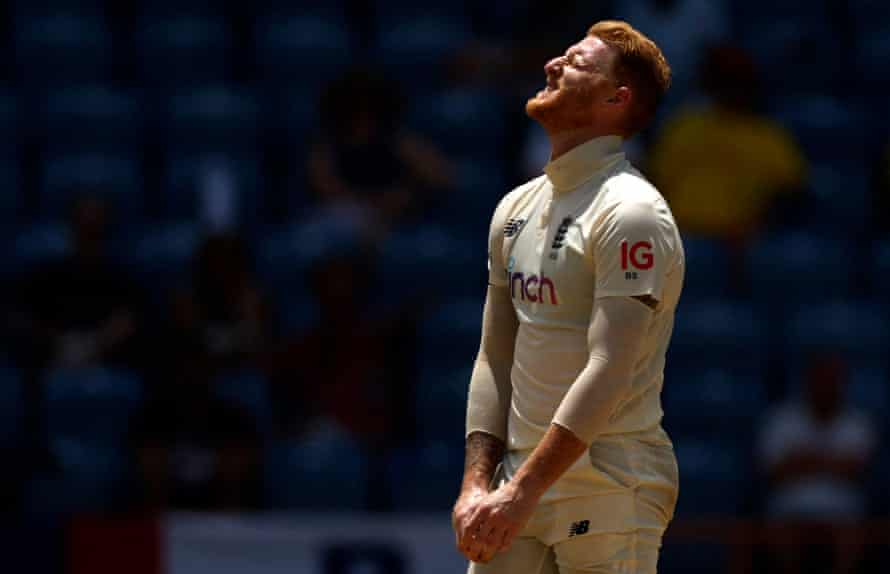Joe Root: 289 runs, average 48; one wicket, average 69; four catches
By the hideous denouement, Root’s trademark busyness with the bat required an almost visible force of will; the words he delivered in interviews said one thing, but his eyes said another. The captain may have been dealt a weak hand by English cricket’s mismanagement, but he both bears some responsibility for those decisions (especially selection) and can be accused (again) of failing to get the most from the resources available to him. It was harder to discern the tactics of England’s most experienced captain than those of the West Indies’ much less experienced skipper. There is plenty of mitigation, but there is plenty of underachievement too. This was also Root’s report card for the Ashes defeat; so much for the reset. Grade C-
Zak Crawley: 184 runs, average 31; one catch
An opening batter will get a lot of good balls and get out to some of them – that is forgivable. It’s getting out to nothing balls that pushes an average down into the low 30s, exposes a middle order and lifts an opposition. The talent is there, but can England afford the luxury of waiting for it to flourish? Grade C+
Alex Lees: 126 runs, average 21; one catch
Only Root faced more than his 460 deliveries and Lees was not dismissed before the 18th over in each of his last four innings. On the one hand, that is what England’s Crunchie-bar-brittle batting order needs – on the other, it’s why Dominic Sibley was dropped. Grade B-
Dan Lawrence: 197 runs, average 33; two wickets, average 32; two catches
When Lawrence looks good, he looks very good. But when he looks bad, he looks awful. He is another batsman whose technique is going to reward Test match bowlers. Grade C+
Ben Stokes: 194 runs, average 32; seven wickets, average 27
Stokes pressed the turbo button to smash an extraordinary century in the second Test, but it was – as many of his innings seem to be these days – that of a No6 or No7 rather than a No5. That much is understandably, given his captain’s insistence that he bowl so many overs and his body’s ever more obvious rebellion against such a heavy workload. Grade B

Jonny Bairstow: 226 runs, average 45; two catches
Bairstow’s brilliant century in the first Test meant England were not written off after one day of the series but, not for the first time, he could not make the most of his form. Being suckered into a flail in his 83rd Test by Joshua Da Silva (playing in his 14th) rather summed up England’s weakness under pressure. Grade B-
Ben Foakes: 96 runs, average 19; eight catches
Making keeping look easy, even on challenging tracks, is his thing, so it was a surprise that he made it look as difficult as he did. After a promising start with the bat, Foakes could do nothing in the third Test showdown. Grade C-
Chris Woakes: 130 runs, average 43; five wickets, average 46; one catch
It’s so predictable, yet still so inexplicable, that the “top of off stump and just outside” approach that works so well at home – and is often called for by pundits– cannot produce the goods beyond England’s shores. As usual, his batting looked more fluent than most of the seven that went in before him. Again, this was also Woakes’ Ashes report card. Grade C-
Craig Overton: 15 runs, average 5; four wickets, average 47; three catches
Overton looked toothless, finding neither the sideways movement nor splice-jarring bounce from just short of a length that has brought him so many domestic wickets. Grade D
Matt Fisher: no runs; one wicket, average 71; one catch
Fisher did not look out of place on his debut (and that’s not intended as a backhanded compliment) and he can count himself unlucky not to retain his place. He will come again. Grade C+
Jack Leach: 50 runs, average 50; 11 wickets, average 31
If you are the only spinner selected, there are few hiding places, especially if, for once, the captain gives you catchers around the bat. As a 30-year-old with 22 Tests behind him, Leach has to present more of a wicket-taking threat, even if the inexplicably popular phrase “holding an end” is the primary objective. Without a real rip on the ball, he does not find the drift and dip that can defeat a top batsman in the flight, too many deliveries the equivalent of a fast bowler floating the ball up on an unresponsive surface. He is a great team man and is mentally tough, as his batting showed, but his career may be holed below the waterline by a lack of jeopardy, especially in first innings. Grade B-
Mark Wood: one run, average one; one wicket, average 45
His wicket was Kraigg Brathwaite, the West Indies’ best batsman and captain, caught in the gully off a 91mph thunderbolt. That is genuine world class bowling, but, as is increasingly clear, not a sustainable brief over a Test series (or even a Test). Grade B
Saqib Mahmood: 49 runs, average 49; six wickets, average 21; one catch
The Lancashire pacer bowled fast and found reverse swing from an action that looked repeatable and less stressful than that of many other young England bowlers. His unexpected cameo with the bat and a quip or two in interviews showed that he might just relish the limelight – something fewer and fewer of his colleagues appear to enjoy. Grade A-
